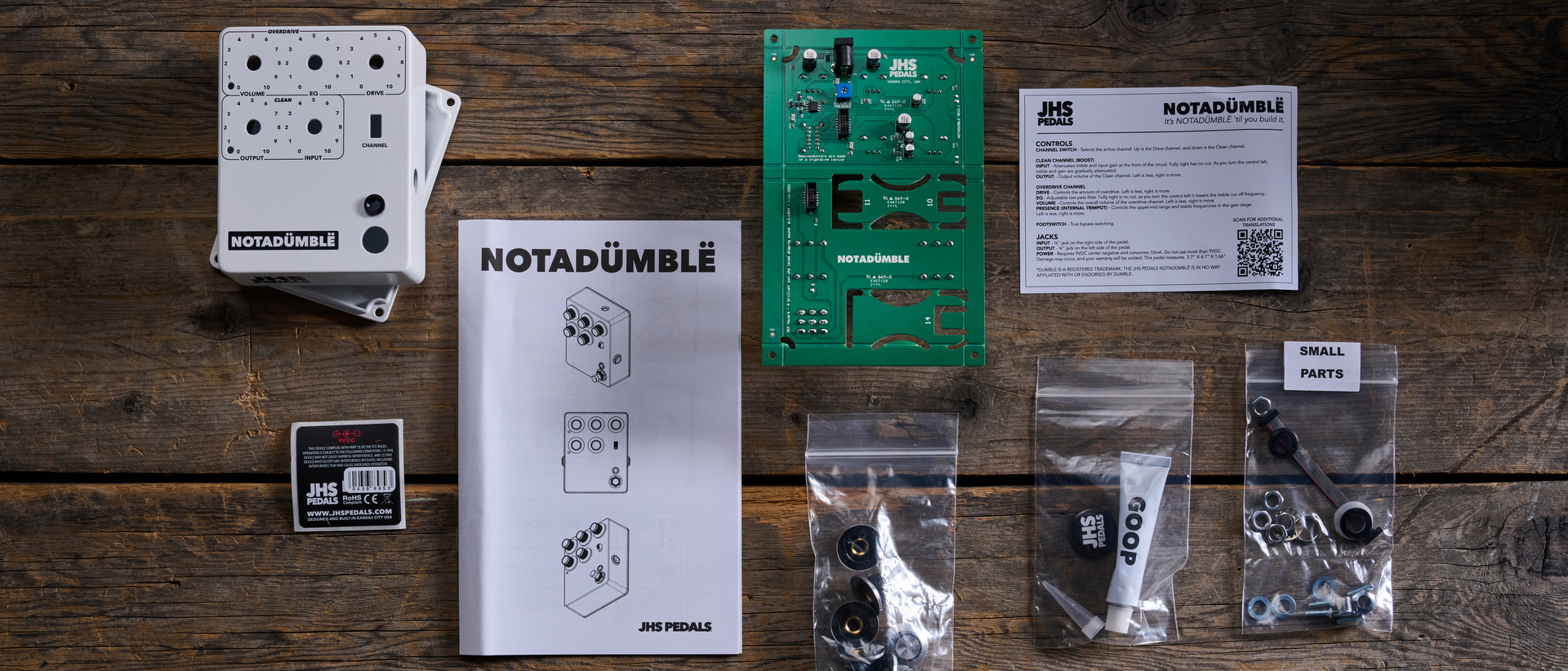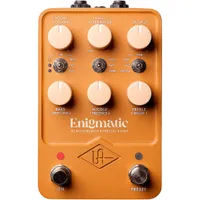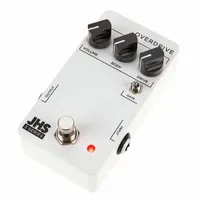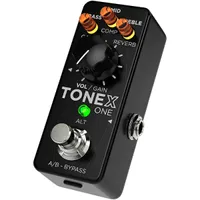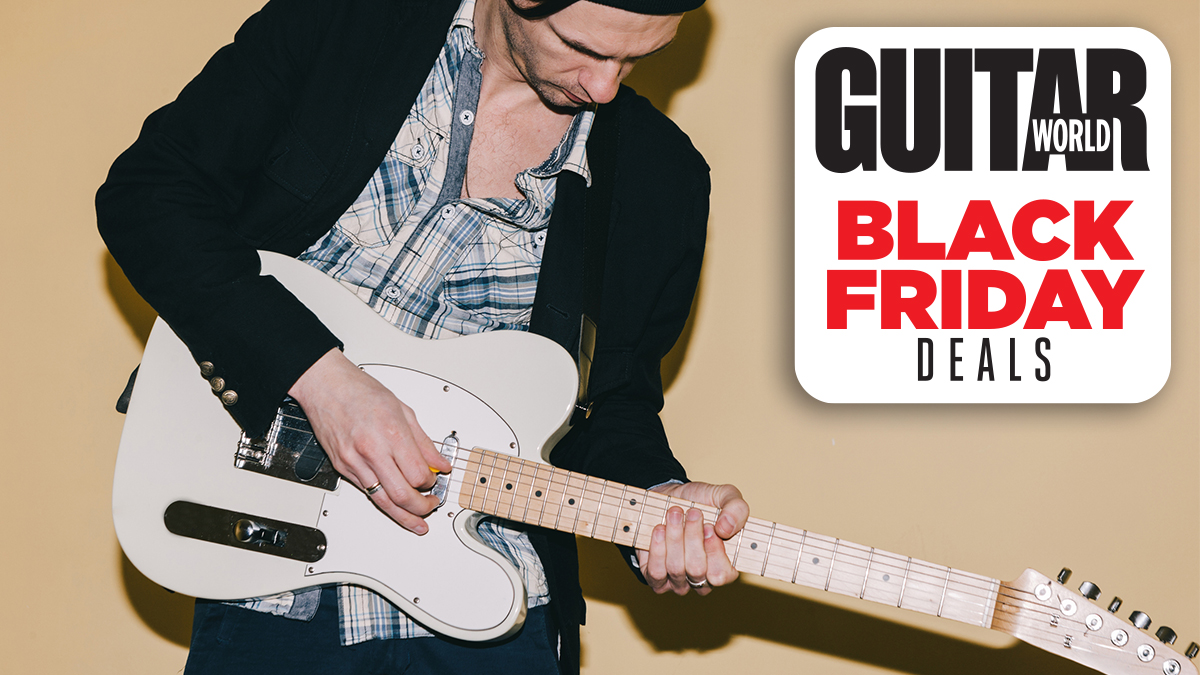Guitar World Verdict
This is a versatile Dumble tone in a simple DIY box, with a clean side that adds life to a clean amp and an overdrive providing a healthy dose of sustain, within a pleasing, mid-forward tone. Personally, I would not be taking JHS up on their offer of a return, but rather keeping it on my board as an always-on solution to add that dumble touch to any rig.
Pros
- +
Dual pedal with clean and overdrive sides.
- +
Great Dumble sound.
- +
Fun and easy to build.
- +
Versatile.
Cons
- -
No footswitch to change channels.
- -
The internal presence trim pot is useful and would be handy on the front panel.
You can trust Guitar World
What is it?
A little bit different from the norm, the JHS DIY range allows us to build pedals without the risk of burning ourselves on soldering irons.
Following on from the Notaklön boost/overdrive pedal, Notadümblë is the second in the series, and, due to an understandable series of unfortunate events leading to a schematic mix-up, has been quickly discontinued.
JHS has very fairly offered a free refund to those looking to return their Notadümblë; however, should you do this? Or, despite the mishap, is it still a great pedal worthy of keeping around?
We have all heard much about the coveted Dumble amps. Used by the likes of Robben Ford, Carlos Santana, Joe Bonnamassa, John Mayer, and many more, they are the epitome of guitar amplification for many a tone chaser. However, their rarity and expense puts them beyond the reach of most, leading to a plethora of gear that provides said tone in a way that is achievable for the normal person.
Dumble amps were built bespoke to each player who bought one, so defining the Dumble sound can be a little tricky. Generally speaking, the consensus is that throughout the amplifiers Alexander Dumble built, was a smooth, mid-forward and sustain-enducing characteristic, so it is this that Dumble-esque gear attempts to recreate.
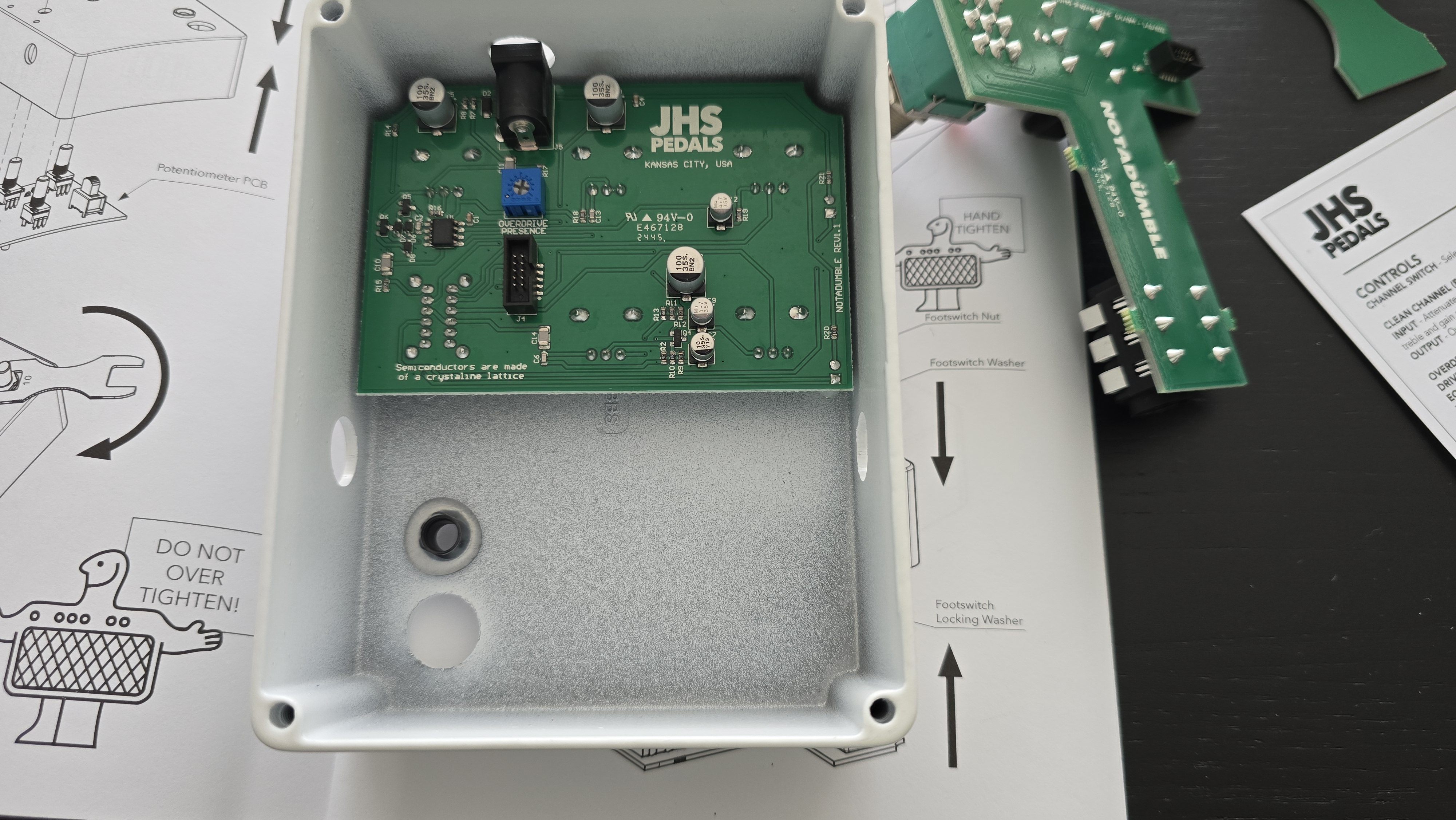
The Notadümblë looks to fulfil this brief in a pedal format that brings that sound to any amplifier, with an overdrive side based on the Dumble amps to give your tone that touch. Alexander Dumble also built some pedals that are reflective of the canonical Dumble tone, and it is his BBC1 that the Notadümblë's clean side is based on.
This, however, is where the aforementioned mishap lies, as it was intended that the clean side was actually supposed to be a copy of the Box It Later - a pedal built by JHS for John Mayer, which was inspired by Dumble's A Box Later. As JHS founder Josh Scott explains below, this was realised a couple of weeks after the release, hence the offer of a refund to those who bought something that wasn’t quite as advertised.
All the latest guitar news, interviews, lessons, reviews, deals and more, direct to your inbox!
The best thing to do here is to get info on this from the man himself and watch JHS’ video explaining it all in detail, but the TLDR is that the BBC1 and A Box Later are different circuits that sound very similar and do the same job.
Specs
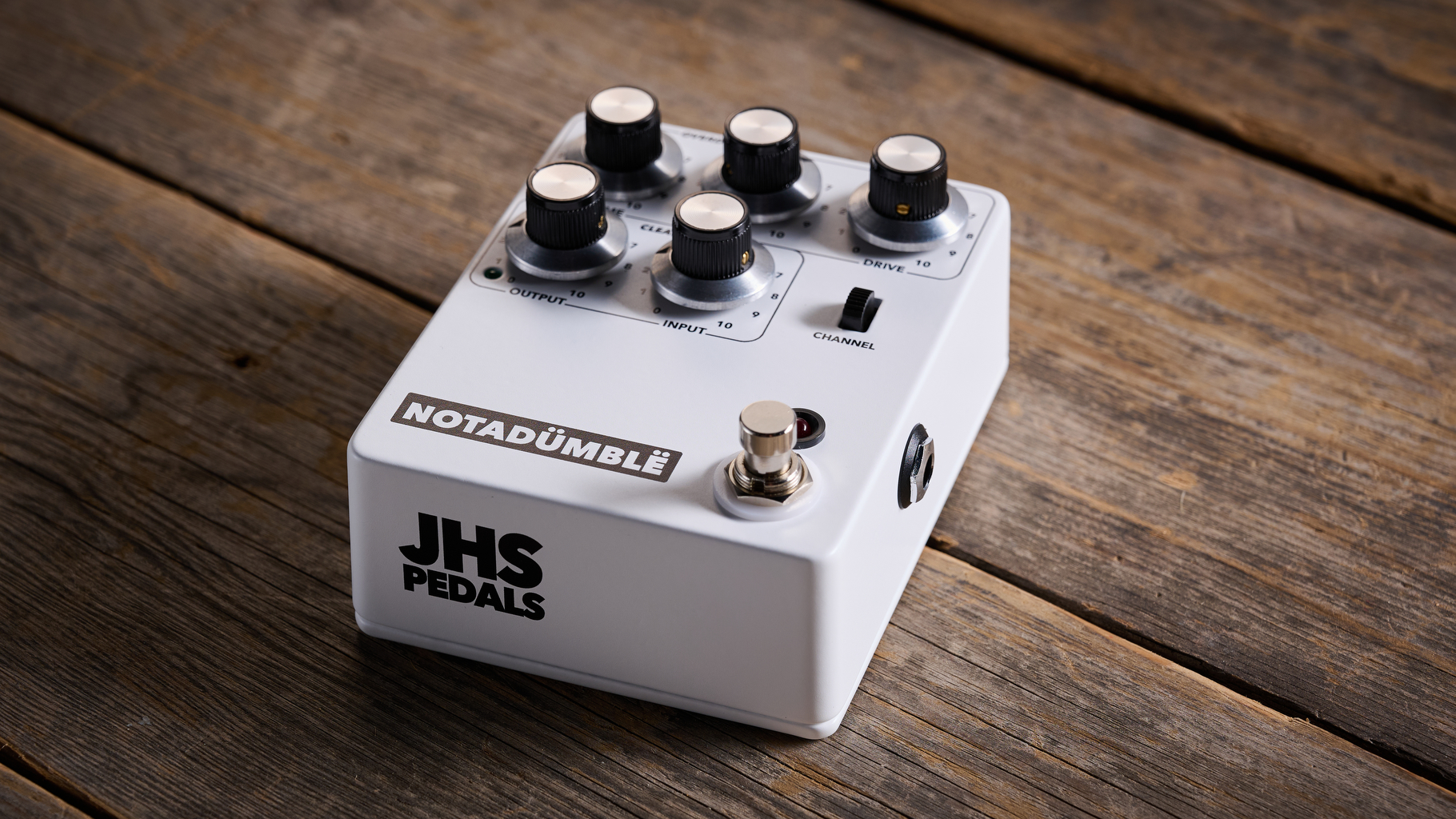
- Launch price: $119/£89/€103
- Type: Dual overdrive/clean boost pedal
- Controls: Overdrive side: volume, EQ, drive Clean side: input, output, presence (internal trim pot)
- Features: Self assembly Dumble-style pedal kit
- Bypass: True bypass
- Power: 9v center negative
- Dimensions: 3.7”x4.7”x1.66”/9.4cmx12cmx4cm
- Weight: 12.6oz/359g
- Contact: JHS
Build quality

Assembly and build quality rating: ★★★★★
Building the pedal is easy. You will need a screwdriver to get the back plate attached and a precision screwdriver to secure the knobs, but that is it. The kit cleverly contains the wrenches required and the PCB is already populated with all the components, so it’s just a case off snapping off the required parts of the PCB, attaching a ribbon cable and sorting out a few screws and bolts.
I enjoy the odd pedal build kit, and have built a good few that arrive with an empty PCB and through-hole components that need to be soldered on. As much as I like the challenge of that quite involved and fiddly format, building the Notadümblë is a fun and easy 30 minutes.
Let’s face it, we all have drawers of equipment purchased for hobbies we never followed through on, so the "Notakit" series is perfect for those who want to give the whole DIY pedal experience a go, before investing in the equipment needed for soldering parts.

Additionally, it’s simple enough that it is something younger people could do too, and I can see how doing this may be the inspiration that sets someone on the road to designing and building their own pedals.
Assuming you follow the easy-to-read instructions properly, the end result is a surprisingly sturdy pedal. There is a reassuring resistance to the pots, the footswitch feels like it will last and generally, whilst it doesn’t have a premium feel, it is exactly what you would hope to get from a $119 pedal, even without considering the DIY aspect.
For what is essentially a drive pedal, it sits within a comparitavely large enclosure. But it seems to me that this is likely to facilitate an easy building experience, which is a sensible compromise. JHS has noted some issues with the knobs in earlier models, and now ships with an extra to combat this. No such issues were present in this test example.
Usability

Usability rating: ★★★½
I would be keen to use it in an almost preamp context
Drive pedals are usually pretty simple beasts, and the overdrive section of the Notadümblë follows this trend with three simple to use and self-explanatory controls - Volume, EQ, and Gain.
The clean section isn’t so straightforward to define. Output controls the output level, no issues there, but the Input control does something a little different. As stated by JHS, this “changes the impedance, which sort of sounds like a tone control, but it’s also extremely felt in the guitar”. This is bound to cause a little confusion, but this, in my opinion, is understandable given the inherent difficulty in describing a control like that in one word.
As mentioned, we have two sides here: Clean and Overdrive. We toggle between these via a slider switch rather than a footswitch. Spoiler alert: I love the sounds of both sides of this device and would be keen to use it in an almost preamp pedal type context, feeding it into a clean amp with the clean side of the pedal livening the amp up, and switching over to the overdrive side for my driven sounds. The lack of a footswitch to do this means this isn’t possible in a live setting, which makes me a little sad.
JHS addresses this in a video above and states that the intention was to recreate the feeling of the front panel of a Dumble amp. And whilst I completely understand this, and appreciate the concept, as a live guitar player, I would much rather have a footswitch that allows me to use both sides in my live rig.
There’s also an internal presence control that handles those breathy, high-end frequencies. I found myself dialing more of this in for my Les Paul and less for my Telecaster. Meaning having it on the front panel and easily accessible would be a welcome improvement.
Sounds
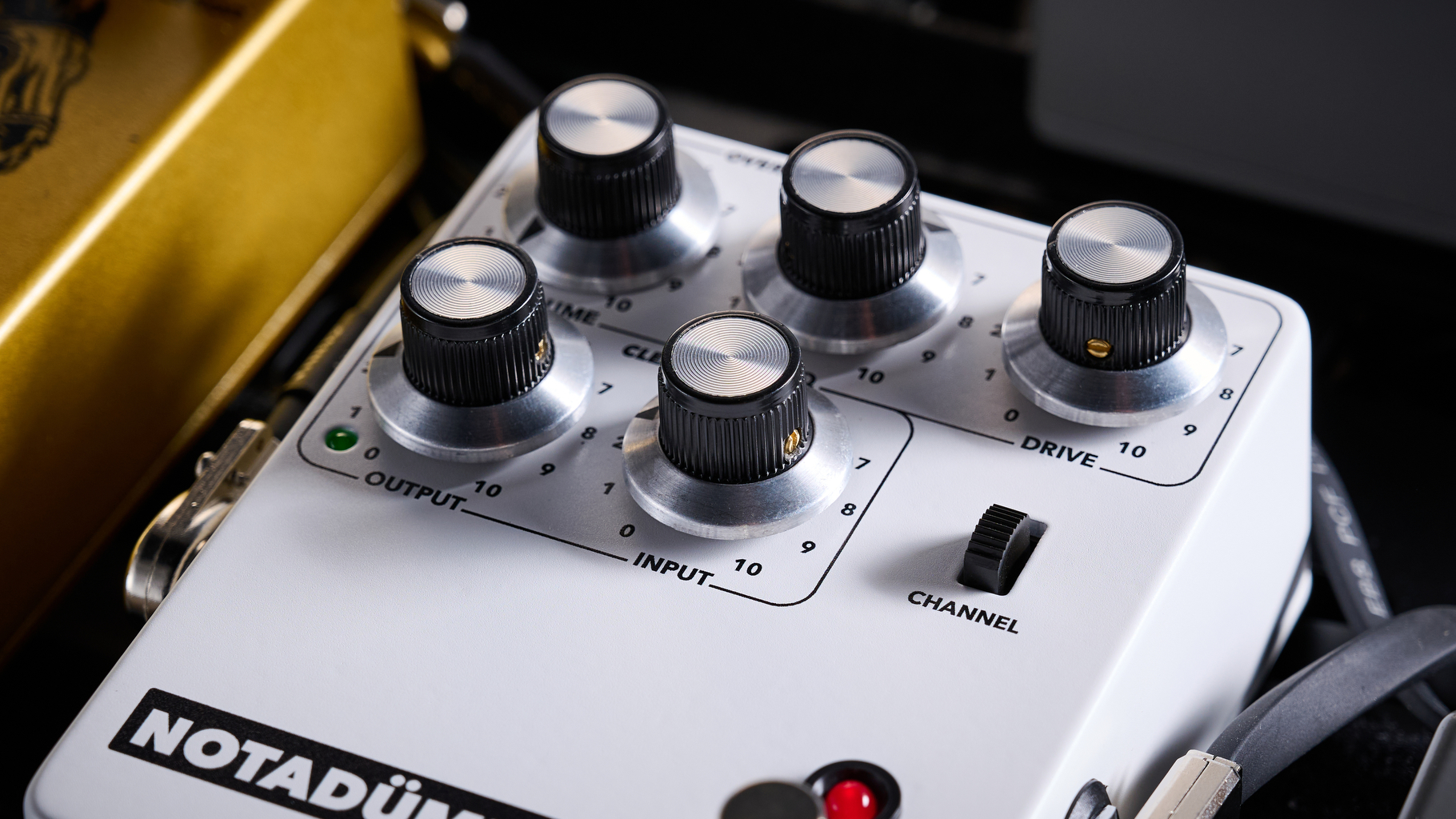
Sounds rating: ★★★★★
My Dumble experience, like most of us, does not include a real Dumble amp, but rather Dumble-esque bits of gear. From UA’s Enigmatic pedal to the Tonex Pedal captures of famous Dumble amps and Dumble-inspired models in the Line 6 Helix, the common thread is that smooth, mid-forward character coupled with a healthy sustain.
As mentioned, each dumble amplifier is different, so what I am looking for in something that fits this category is that common thread. Starting with the clean side and playing my telecaster through a squeaky clean and ubiquitous Hot Rod Deluxe IV, the bass end is rolled off, and those mids are brought forward and the high end sounds a little sculpted in a very pleasing way.
The J-FET-based circuit has the effect of bringing my Hot Rod Deluxe to life, adding a little extra sparkle to my usual repertoire of pop/rock clean tones. There seems to be a touch of compression throughout, with the input control making the tone generally warmer and slightly more compressed as you dial it in.
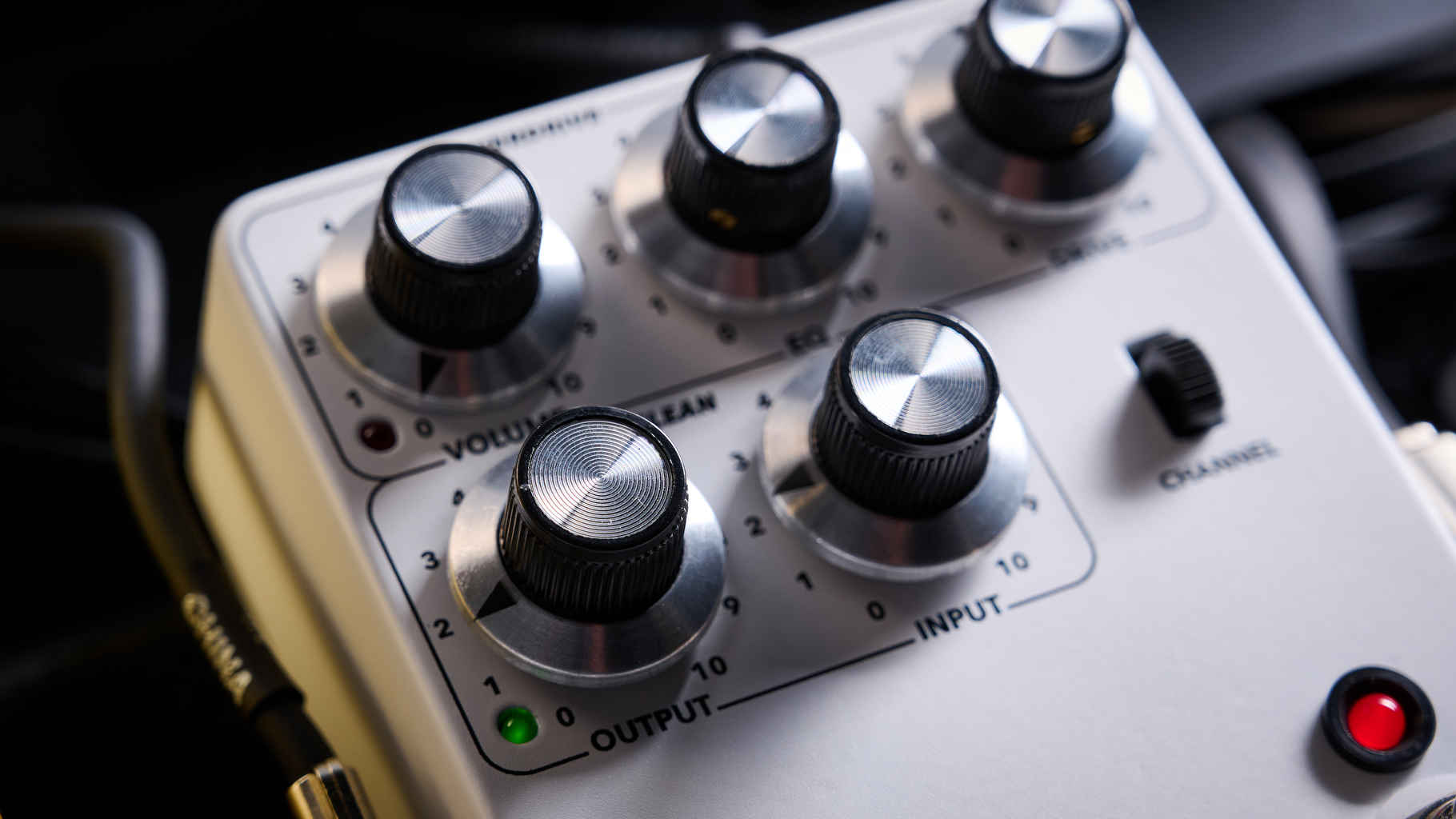
The Notadümblë adds a little extra something to any amp
This all adds up to a great ‘always on’ tone to add a little extra something to an amp, or as a solo boost either before or after a gain stage. I particularly enjoyed it placed after my Blues Driver, with the input control at 10, giving my sound a volume boost (of which there is plenty available) and smoothing out the BD2’s sometimes harsh tone.
Alternatively, placing it before the Blues Driver allowed me to push it into some pretty full-on overdrive - akin to an AC/DC tone, but with extra gain.
In some of the Dumble-style models I have played, there is a lot of gain on tap, but this is not the case here. The drive side of the Notadümblë is more of mid-gain territory, but with buckets of sustain, that smooth mid frequency push, and a reduction of low end. Bringing out the old Cream and SRV licks, it’s the sort of tone that makes playing through blues rock riffs endless fun.
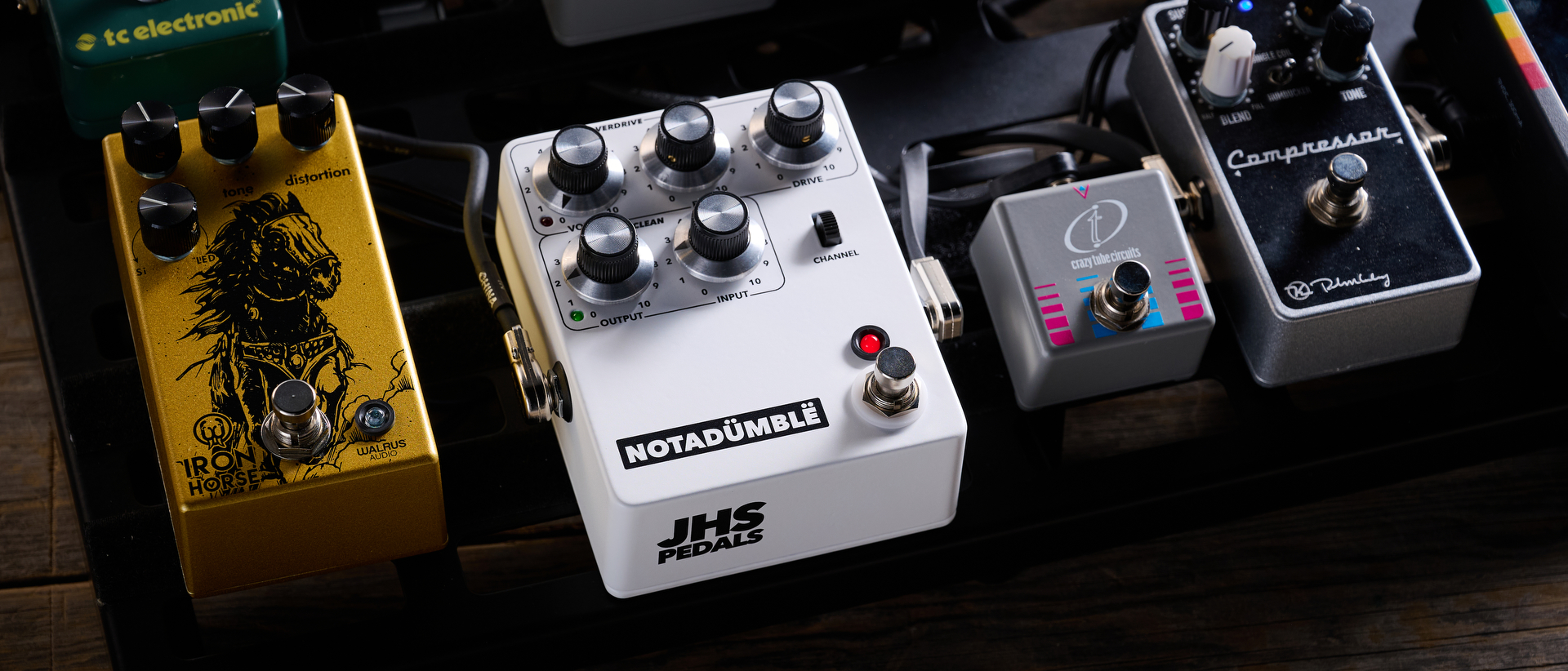
The EQ is nicely dialled in to give some clarity when the drive control is turned up, and can roll off nicely to give a woolly kind of overdrive, which would be particularly pleasing to any Santana fans. Impressive is how the pedal handles different styles of guitars. Switching between my Telecaster and Les Paul, the tonal characteristics of each guitar are accurately reflected. As previously mentioned, for the Les Paul, I found the internal trim pot useful as a means of keeping humbuckers sounding bright.
Given that the pedal doesn’t go into high-gain territory on its own, I whip out my RYRA The Klone to see how the Notadümblë handles getting pushed. Leaving the gain off and using the RYRA as a level boost, the Notadümblë begins to sing in what was an incredibly enjoyable, searing lead tone. Impressively, clarity is maintained even as I started gunning the volume and gain on the RYRA, with the tone starting to cave in at only the most extreme settings.
This, then, is what qualifies my earlier statement, noting the Notadümblë as a pedal I would always leave on. The clean side adds life to a clean amplifier, and the overdrive is a smooth, rewarding, and sustain-soaked sound that handles pedals incredibly well. Making for a versatile piece of gear that would have a place in most rigs.
Verdict
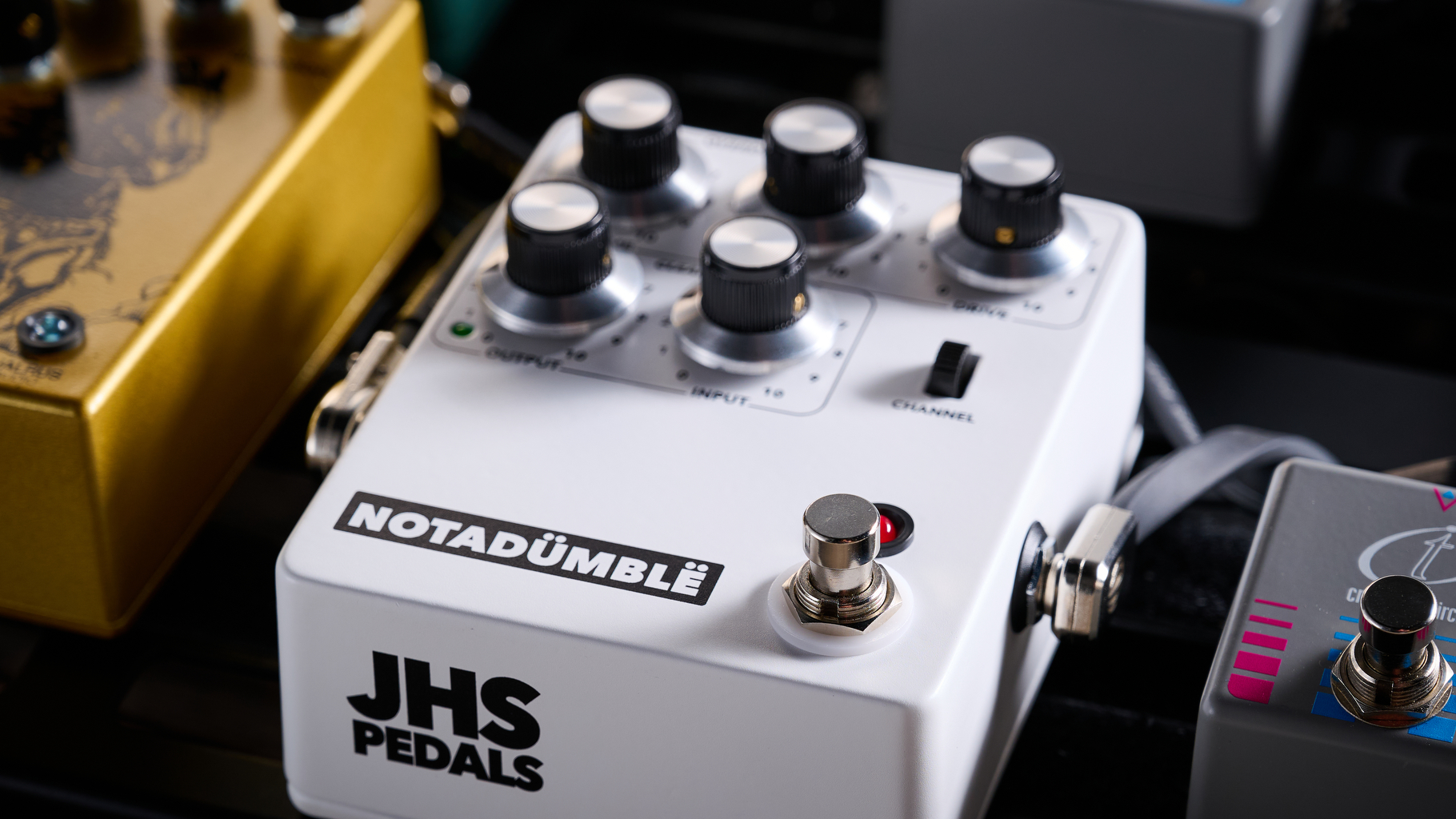
What I find is a pedal build that feels like guitar pedal LEGO
The Notakit range of pedals is an interesting concept. This, combined with the offer of a return to those who already own a Notadümblë and the prospect of a version 2 incoming, make the Notadümblë worth a look, despite it being discontinued.
What I find is a pedal build that feels like guitar pedal LEGO, with the prospect of encouraging some to delve deeper into the wonderful rabbit hole that is that world. More importantly, though, it sounds great in its own right and is sturdy enough to gig regardless of its DIY nature.
While I would like to have seen a footswitch to change sides, and the internal trim pot be more accessible in order to make it more viable for use in a live environment across different guitars, it is a pedal that does as promised. Providing that smooth, sustain-soaked sound that’s considered to be a signature of Dumble amps, despite their varied nature. And, word has it, at least one of these issues may be getting addressed in version 2.
Guitar World verdict: This is a versatile Dumble tone in a simple DIY box, with a clean sound that adds life to a clean amp and an overdrive providing a healthy dose of sustain, within a pleasing mid-forward tone. Personally, I would not be taking JHS up on their offer of a return, but rather keeping the Notadümblë on my pedalboard as an always-on solution to add that Dumble touch to any rig.
Test | Results | Score |
|---|---|---|
Build quality | Easy to build and surprisingly sturdy for a DIY pedal. | ★★★★★ |
Usability | A second footswitch to change channels would make it more viable fort live use, and the trim pot would be better on the front panel | ★★★☆½ |
Sounds | A brilliant clean boost and enhancer, and a smooth, sustain drenched overdrive | ★★★★★ |
Overall | Solid build and great Dumble sounds, with only a few usability issues in a live setting | ★★★★½ |
Also try
UA Enigmatic 82 Overdrive Special - £325/€349/$349
Part of UA's amp modeling pedal range, the Enigmatic models different iterations of a Dumble amplifier, as well as providing a number of different emulated cabs to choose from.
Read more: UA Enigmatic 82 Overdrive Special review
JHS 3 Series Overdrive - $99/£99/€119
Based on the HAO Rumble MOD, which in turn was based on a Dumble-style overdrive, this is JHS's affordable series range, providing that Dumble flavoured drive at a budget price point.
Read more: JHS 3 Series
Tonex One - $149/£149/€158
A tiny piece of gear that enables the storing and playing of amp captures within Tonex's library, you can model a Dumble and get that coveted tone in a small package for an equally small price.
Read more: Tonex One review
Hands-on videos
60 Cycle Hum
JHS
Jaimie Slays


You must confirm your public display name before commenting
Please logout and then login again, you will then be prompted to enter your display name.
